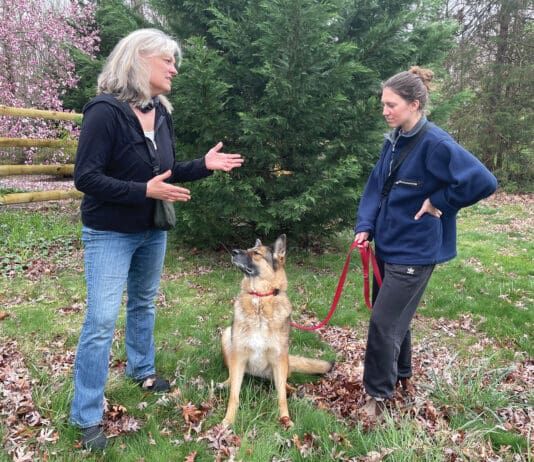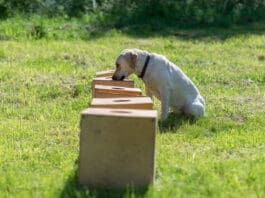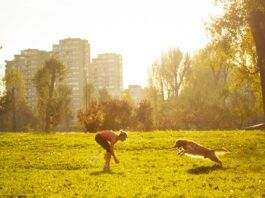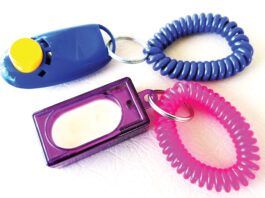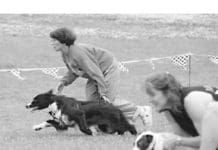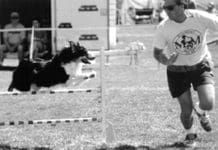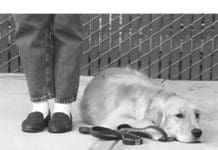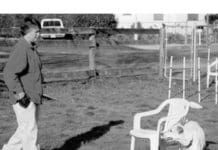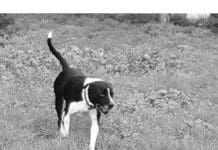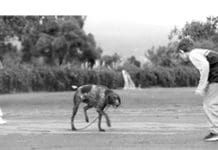The Value of the Harness as a Basic Positive Training Tool
The harness is routinely used for certain canine activities such as carting, mushing, tracking, and guiding the disabled. It is also an important accessory for the canine seat belt, since it’s not safe to restrain your dog by his collar in a moving vehicle. Oddly, there isn’t much talk about the value of the harness as a basic positive training tool. With all the justifiable concern about the risk to a dog’s throat from pressure, or worse, jerks on a collar, it would seem that harnesses might find greater favor with positive trainers.
Flyball Racing
Flyball racing is fast and furious. Most of all, it's a great time for both dogs and people! The first time I saw Flyball
Canine Agility Training: The Ultimate Team Sport
By now, if you're into dogs, you've probably heard about agility. Maybe you've even seen it in action or tried it with your dog. Agility is one of the fastest growing dog sports in the world, and with good reason it's fun! Of all of the dog things I've done
Understanding Reward Based Dog Training
In the 1950s, behavioral scientist B.F. Skinner developed a number of principles that are applicable to all living things with a central nervous system. He found that animals are likely to repeat behaviors that are enjoyable/rewarding to them, and not likely to repeat behaviors that result in something unpleasant (punishment). Neutral stimuli – things that don’t matter to the animal – don’t have an impact on behavior one way or the other. Skinner demonstrated that humans can use these simple principles to modify an animal’s behavior. Rewards are the most reliable way to deliberately increase an animal’s offered behaviors; conversely, punishment decreases those behaviors. (See “The Four Principles of Operant Conditioning,” next at end of story). We use these behavioral principles in dog training with great success.
Off Leash Training: Building Reliability
There is no way to guarantee the safety of your dog off leash. I would like to think that if we trained hard enough, or long enough, or with the right methods, that we could overcome all of the risks, that our dogs really could be completely reliable and safe. But the fact is that when dogs are off leash in an unsecured area, there will always be a chance that their instincts or desires will lead them into the path of danger. In addition, our environment is often unpredictable. When dogs are off leash, there is the chance of a sudden bang, an unexpected animal, or something else that may frighten or harm our dogs.
Training Your Dog to Behave Around Guests
Whether you have a pup with normal puppy energy or an obstreperous teenager who has good manners lessons to catch up on, clicker training can be a magically effective and gentle way to convince a dog to calm down. No yelling, no physical punishment; just clicks and treats for any pause in the action. That said, the biggest challenge with a hyper" dog is that any praise or reward may cause her to begin bouncing off the walls again. It is nearly impossible to deliver a treat to an excitable dog while she is still in the act of being calm. By the time you get the treat to her mouth she is once again doing her Tasmanian devil act."
Post-Exercise Accupressure for Active Dogs
If your dog shows signs of acute pain or distress, we encourage you to take him to your holistic veterinarian. Acupressure is an excellent resource and complement to your dog’s health care since you can perform treatments yourself, but it is not a substitute for veterinary care. Your dog will enjoy playing, running, jumping, weaving through poles – whatever your sport – much more if you help take good care of his body. Acupressure is safe, always available, drug-free, and dogs love the touch of their special people.
Force-Based Training Methods and Some Unintended Consequences
Most people, unwittingly or intentionally, use a lot of physical force when raising and training their dogs. The purposeful ones have a whole variety of reasons. Some may have read about behavioral theories regarding dominance and “the importance of showing the dog who’s boss.” Fans of these theories may advocate imitations of canine behavior such as “scruff shakes” or “Alpha rolls” to convince the dog he’s at the bottom of the family hierarchy. Others may have been influenced by advocates of traditional, military-style training – think of yanking collar ‘corrections’ or using the leash leveraged under their foot to forcibly pull a dog into a Down.
Teaching Your Dog “Off”
When they fill out their evaluation forms at the end of a six-week course, my clients frequently name the Off" exercise as one of the most useful behaviors they have taught their dogs in class. "Off" means "Whatever you are paying attention to right now
Getting Your Children Involved in Training the Family Dog
One of the things that parents almost always say when they decide to add a dog to the family is, It will help teach the kids about responsibility." That's the hope
How to Teach Your Dog to Eliminate on Cue
and will be forced to soil the crate. Once a puppy's inborn instinct to keep his "den" clean is broken
Positively the Best Dog Training Book
handlers are allowed to verbally cue


